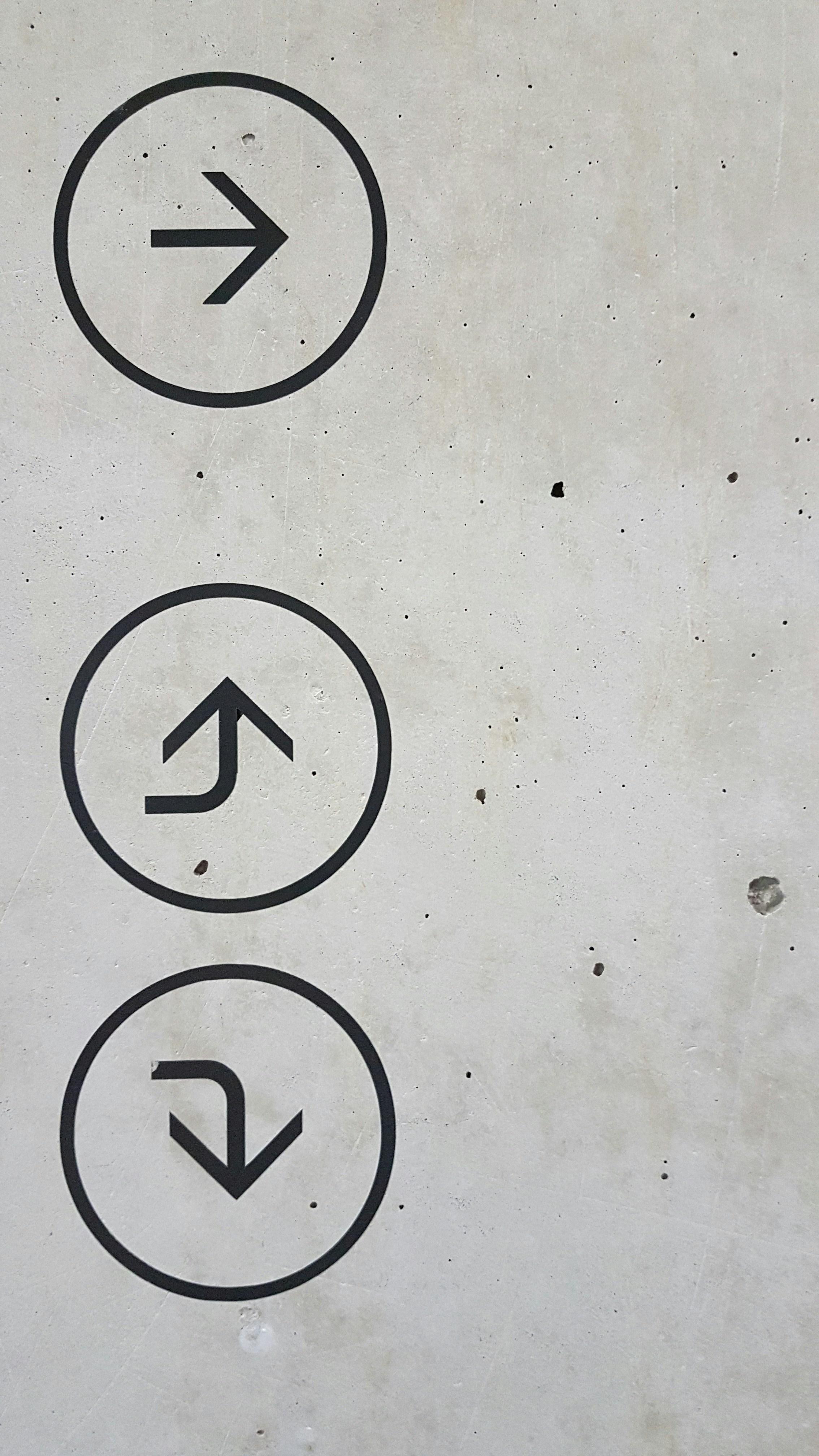


Category: Strategy
Jan 11, 2025
The Hidden Crisis in Business: When Optimization Masks a Lack of True Differentiation
The Optimization Trap
Imagine a street lined with restaurants. One invests in faster service, trains its staff relentlessly, and renovates its dining room every few years. Yet, despite these efforts, customers walk past it every night. Why? Because its menu is identical to every other restaurant on the block, same dishes, same ingredients, same promises.
This is the trap many businesses fall into today: They obsess over doing things right but forget to ask are we doing the right things?
When revenue stalls, leaders rush to optimize processes, trim costs, and demand more from teams. But what if the problem isn’t how well you’re executing, it’s that no one cares what you’re executing?
The Real Problem: Invisible in a Sea of Sameness
Markets today are saturated with competitors offering nearly identical products, services, and messaging. Customers are overwhelmed by choice, yet underwhelmed by value. When businesses fail to differentiate, they become commodities, competing solely on price, convenience, or inertia.
Consider this:
77% of B2B buyers say the products they purchase are “very similar” across vendors (Gartner).
64% of consumers cite “lack of differentiation” as a reason for switching brands (McKinsey).
Optimizing a broken model might slow the bleeding, but it won’t heal the wound.
Why Leaders Overlook Differentiation
Short-Termism: Quarterly targets prioritize quick fixes over long-term reinvention.
Risk Aversion: “Stick to the core” feels safer than reimagining the business.
Metrics Fixation: It’s easier to measure click-through rates than emotional customer loyalty.
Leaders default to optimizing because it’s tangible. Differentiation feels abstract, until revenue vanishes.
The Cost of Blending In
Undifferentiated companies face:
Price Wars: Margin erosion as competitors undercut you.
Customer Churn: Loyalty dissolves when alternatives are indistinguishable.
Talent Drain: Top talent seeks employers with vision, not stagnation.
Case in point: Blockbuster optimized its store operations while Netflix reimagined entertainment delivery. One no longer exists; the other revolutionized an industry.
How to Diagnose a Differentiation Problem
Ask your team:
The “Why Us?” Test: Can employees articulate your unique value in 10 seconds?
Competitor Comparison: If your marketing materials were swapped with a rival’s, would anyone notice?
Customer Feedback: Do buyers cite emotional reasons for choosing you (trust, pride, belonging) or just transactional ones (price, speed)?
Example: Apple’s “Think Different” campaign didn’t sell specs, it sold identity.
Reinventing Your Edge: Strategies for Meaningful Innovation
Differentiation isn’t about being “unique.” It’s about being irreplaceable.
1. Reimagine Customer Experience
Zappos didn’t just sell shoes—it built a culture of “wow” through hassle-free returns and 24/7 customer service.
Action: Map your customer journey. Where can you eliminate friction or create delight?
2. Pivot Your Business Model
Tesla bypassed dealerships to control the customer experience.
Adobe shifted from selling software licenses to a SaaS subscription model.
Action: What legacy assumptions can you challenge? (Hint: “We’ve always done it this way” is a red flag.)
3. Own a Niche
Oatly didn’t just make oat milk, it championed sustainability, appealing to eco-conscious consumers ignored by larger dairy brands.
Action: Find an underserved segment and obsess over their unmet needs.
4. Innovate Through Constraints
Warby Parker disrupted eyewear by combining affordability, style, and at-home trials, a response to an industry ripe for change.
Action: Turn your limitations (budget, size, resources) into creative advantages.
Overcoming the Fear of Standing Out
Differentiation feels risky because it is risky. But stagnation is riskier.
Start Small: Test bold ideas in controlled environments (e.g., pilot programs, limited releases).
Embrace Feedback: Involve customers early. Airbnb’s founders sold cereal boxes to fund their early experiments, and learned to pivot fast.
Lead with Purpose: Patagonia’s “Don’t Buy This Jacket” campaign challenged consumerism but deepened loyalty among its audience.
Conclusion: From Optimization to Reinvention
The future belongs to companies that dare to stand out, not just slim down. Differentiation isn’t a one-time campaign, it’s a mindset.
Before you:
Hire another sales trainer…
Revamp your website…
Trim another budget…
…Ask: “What can we do that no one else can?”
Because in a world of clones, the most radical act is to be unmistakably yourself.
The Optimization Trap
Imagine a street lined with restaurants. One invests in faster service, trains its staff relentlessly, and renovates its dining room every few years. Yet, despite these efforts, customers walk past it every night. Why? Because its menu is identical to every other restaurant on the block, same dishes, same ingredients, same promises.
This is the trap many businesses fall into today: They obsess over doing things right but forget to ask are we doing the right things?
When revenue stalls, leaders rush to optimize processes, trim costs, and demand more from teams. But what if the problem isn’t how well you’re executing, it’s that no one cares what you’re executing?
The Real Problem: Invisible in a Sea of Sameness
Markets today are saturated with competitors offering nearly identical products, services, and messaging. Customers are overwhelmed by choice, yet underwhelmed by value. When businesses fail to differentiate, they become commodities, competing solely on price, convenience, or inertia.
Consider this:
77% of B2B buyers say the products they purchase are “very similar” across vendors (Gartner).
64% of consumers cite “lack of differentiation” as a reason for switching brands (McKinsey).
Optimizing a broken model might slow the bleeding, but it won’t heal the wound.
Why Leaders Overlook Differentiation
Short-Termism: Quarterly targets prioritize quick fixes over long-term reinvention.
Risk Aversion: “Stick to the core” feels safer than reimagining the business.
Metrics Fixation: It’s easier to measure click-through rates than emotional customer loyalty.
Leaders default to optimizing because it’s tangible. Differentiation feels abstract, until revenue vanishes.
The Cost of Blending In
Undifferentiated companies face:
Price Wars: Margin erosion as competitors undercut you.
Customer Churn: Loyalty dissolves when alternatives are indistinguishable.
Talent Drain: Top talent seeks employers with vision, not stagnation.
Case in point: Blockbuster optimized its store operations while Netflix reimagined entertainment delivery. One no longer exists; the other revolutionized an industry.
How to Diagnose a Differentiation Problem
Ask your team:
The “Why Us?” Test: Can employees articulate your unique value in 10 seconds?
Competitor Comparison: If your marketing materials were swapped with a rival’s, would anyone notice?
Customer Feedback: Do buyers cite emotional reasons for choosing you (trust, pride, belonging) or just transactional ones (price, speed)?
Example: Apple’s “Think Different” campaign didn’t sell specs, it sold identity.
Reinventing Your Edge: Strategies for Meaningful Innovation
Differentiation isn’t about being “unique.” It’s about being irreplaceable.
1. Reimagine Customer Experience
Zappos didn’t just sell shoes—it built a culture of “wow” through hassle-free returns and 24/7 customer service.
Action: Map your customer journey. Where can you eliminate friction or create delight?
2. Pivot Your Business Model
Tesla bypassed dealerships to control the customer experience.
Adobe shifted from selling software licenses to a SaaS subscription model.
Action: What legacy assumptions can you challenge? (Hint: “We’ve always done it this way” is a red flag.)
3. Own a Niche
Oatly didn’t just make oat milk, it championed sustainability, appealing to eco-conscious consumers ignored by larger dairy brands.
Action: Find an underserved segment and obsess over their unmet needs.
4. Innovate Through Constraints
Warby Parker disrupted eyewear by combining affordability, style, and at-home trials, a response to an industry ripe for change.
Action: Turn your limitations (budget, size, resources) into creative advantages.
Overcoming the Fear of Standing Out
Differentiation feels risky because it is risky. But stagnation is riskier.
Start Small: Test bold ideas in controlled environments (e.g., pilot programs, limited releases).
Embrace Feedback: Involve customers early. Airbnb’s founders sold cereal boxes to fund their early experiments, and learned to pivot fast.
Lead with Purpose: Patagonia’s “Don’t Buy This Jacket” campaign challenged consumerism but deepened loyalty among its audience.
Conclusion: From Optimization to Reinvention
The future belongs to companies that dare to stand out, not just slim down. Differentiation isn’t a one-time campaign, it’s a mindset.
Before you:
Hire another sales trainer…
Revamp your website…
Trim another budget…
…Ask: “What can we do that no one else can?”
Because in a world of clones, the most radical act is to be unmistakably yourself.
The Optimization Trap
Imagine a street lined with restaurants. One invests in faster service, trains its staff relentlessly, and renovates its dining room every few years. Yet, despite these efforts, customers walk past it every night. Why? Because its menu is identical to every other restaurant on the block, same dishes, same ingredients, same promises.
This is the trap many businesses fall into today: They obsess over doing things right but forget to ask are we doing the right things?
When revenue stalls, leaders rush to optimize processes, trim costs, and demand more from teams. But what if the problem isn’t how well you’re executing, it’s that no one cares what you’re executing?
The Real Problem: Invisible in a Sea of Sameness
Markets today are saturated with competitors offering nearly identical products, services, and messaging. Customers are overwhelmed by choice, yet underwhelmed by value. When businesses fail to differentiate, they become commodities, competing solely on price, convenience, or inertia.
Consider this:
77% of B2B buyers say the products they purchase are “very similar” across vendors (Gartner).
64% of consumers cite “lack of differentiation” as a reason for switching brands (McKinsey).
Optimizing a broken model might slow the bleeding, but it won’t heal the wound.
Why Leaders Overlook Differentiation
Short-Termism: Quarterly targets prioritize quick fixes over long-term reinvention.
Risk Aversion: “Stick to the core” feels safer than reimagining the business.
Metrics Fixation: It’s easier to measure click-through rates than emotional customer loyalty.
Leaders default to optimizing because it’s tangible. Differentiation feels abstract, until revenue vanishes.
The Cost of Blending In
Undifferentiated companies face:
Price Wars: Margin erosion as competitors undercut you.
Customer Churn: Loyalty dissolves when alternatives are indistinguishable.
Talent Drain: Top talent seeks employers with vision, not stagnation.
Case in point: Blockbuster optimized its store operations while Netflix reimagined entertainment delivery. One no longer exists; the other revolutionized an industry.
How to Diagnose a Differentiation Problem
Ask your team:
The “Why Us?” Test: Can employees articulate your unique value in 10 seconds?
Competitor Comparison: If your marketing materials were swapped with a rival’s, would anyone notice?
Customer Feedback: Do buyers cite emotional reasons for choosing you (trust, pride, belonging) or just transactional ones (price, speed)?
Example: Apple’s “Think Different” campaign didn’t sell specs, it sold identity.
Reinventing Your Edge: Strategies for Meaningful Innovation
Differentiation isn’t about being “unique.” It’s about being irreplaceable.
1. Reimagine Customer Experience
Zappos didn’t just sell shoes—it built a culture of “wow” through hassle-free returns and 24/7 customer service.
Action: Map your customer journey. Where can you eliminate friction or create delight?
2. Pivot Your Business Model
Tesla bypassed dealerships to control the customer experience.
Adobe shifted from selling software licenses to a SaaS subscription model.
Action: What legacy assumptions can you challenge? (Hint: “We’ve always done it this way” is a red flag.)
3. Own a Niche
Oatly didn’t just make oat milk, it championed sustainability, appealing to eco-conscious consumers ignored by larger dairy brands.
Action: Find an underserved segment and obsess over their unmet needs.
4. Innovate Through Constraints
Warby Parker disrupted eyewear by combining affordability, style, and at-home trials, a response to an industry ripe for change.
Action: Turn your limitations (budget, size, resources) into creative advantages.
Overcoming the Fear of Standing Out
Differentiation feels risky because it is risky. But stagnation is riskier.
Start Small: Test bold ideas in controlled environments (e.g., pilot programs, limited releases).
Embrace Feedback: Involve customers early. Airbnb’s founders sold cereal boxes to fund their early experiments, and learned to pivot fast.
Lead with Purpose: Patagonia’s “Don’t Buy This Jacket” campaign challenged consumerism but deepened loyalty among its audience.
Conclusion: From Optimization to Reinvention
The future belongs to companies that dare to stand out, not just slim down. Differentiation isn’t a one-time campaign, it’s a mindset.
Before you:
Hire another sales trainer…
Revamp your website…
Trim another budget…
…Ask: “What can we do that no one else can?”
Because in a world of clones, the most radical act is to be unmistakably yourself.

Jan 31, 2025
The Hidden Crisis in Business: When Optimization Masks a Lack of True Differentiation
When revenue stalls, leaders rush to optimize processes, trim costs, and demand more from teams. But what if the problem isn’t how well you’re executing—it’s that no one cares what you’re executing?

Jan 11, 2025
Strategy vs. Execution: Why Execution Must Come First
There’s a popular saying in business: “Vision without execution is just hallucination.” While a bit tongue-in-cheek, it captures an important lesson. Regardless of how impressive or innovative your strategy might be, if your organization can’t implement it effectively, the strategy itself is doomed.

Jan 10, 2025
From the Control Tower to the Corner Office: A Lesson in Leadership and Communication
As an air traffic controller, proactive thinking is survival. You predict weather changes, anticipate pilot error, and arrange flight paths with near-clairvoyant foresight. In corporate leadership, being proactive is equally critical. But in business, you have an entire workforce that needs to understand why you’re making the calls that you do.

Jan 31, 2025
The Hidden Crisis in Business: When Optimization Masks a Lack of True Differentiation
When revenue stalls, leaders rush to optimize processes, trim costs, and demand more from teams. But what if the problem isn’t how well you’re executing—it’s that no one cares what you’re executing?

Jan 11, 2025
Strategy vs. Execution: Why Execution Must Come First
There’s a popular saying in business: “Vision without execution is just hallucination.” While a bit tongue-in-cheek, it captures an important lesson. Regardless of how impressive or innovative your strategy might be, if your organization can’t implement it effectively, the strategy itself is doomed.

Jan 31, 2025
The Hidden Crisis in Business: When Optimization Masks a Lack of True Differentiation
When revenue stalls, leaders rush to optimize processes, trim costs, and demand more from teams. But what if the problem isn’t how well you’re executing—it’s that no one cares what you’re executing?
NeWTHISTle Consulting
DELIVERING CLARITY FROM COMPLEXITY
Copyright © 2024 NewThistle Consulting LLC. All Rights Reserved
NeWTHISTle Consulting
DELIVERING CLARITY FROM COMPLEXITY
Copyright © 2024 NewThistle Consulting LLC. All Rights Reserved
NeWTHISTle Consulting
DELIVERING CLARITY FROM COMPLEXITY
Copyright © 2024 NewThistle Consulting LLC. All Rights Reserved
